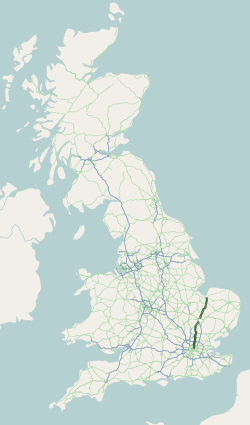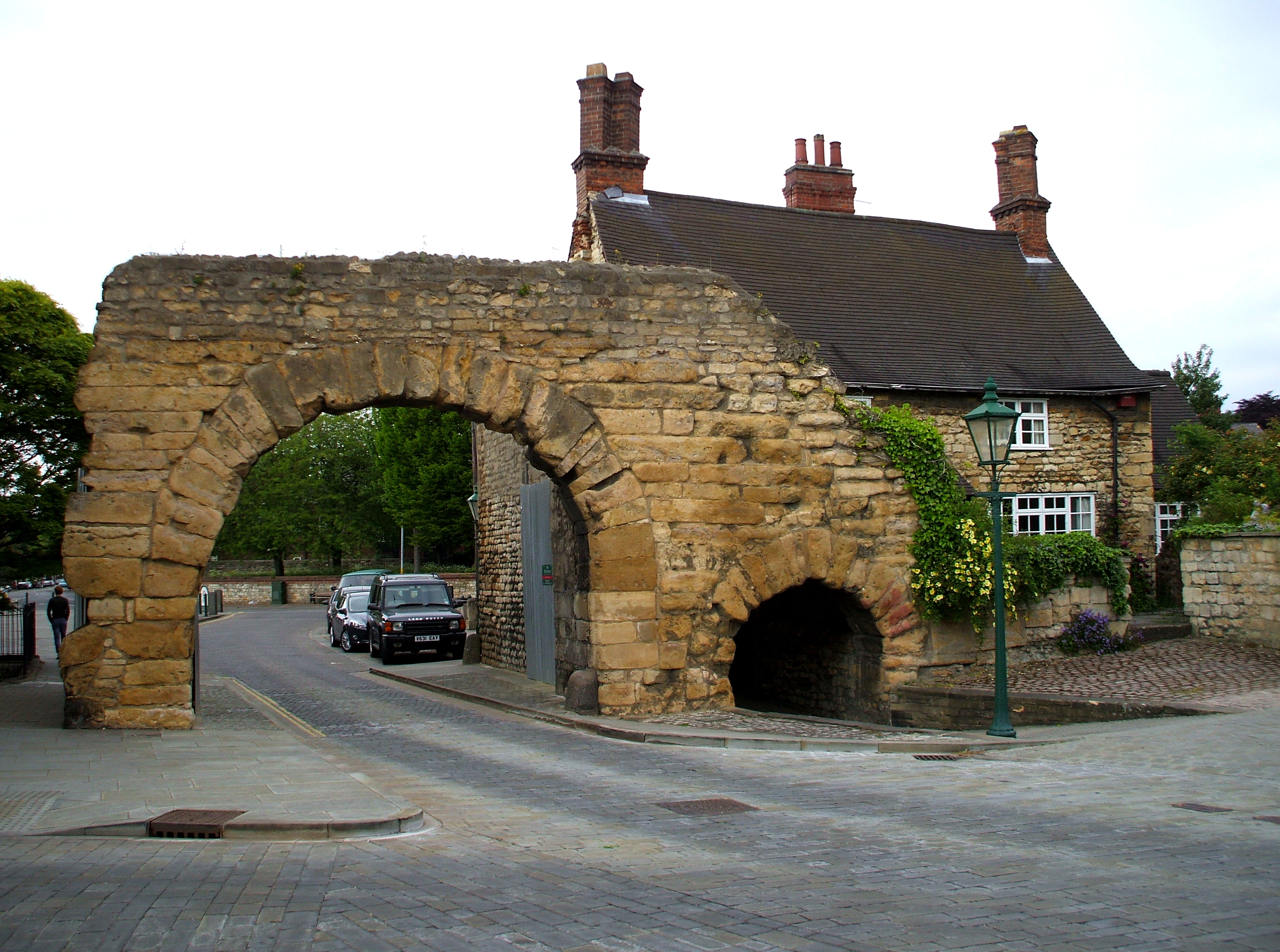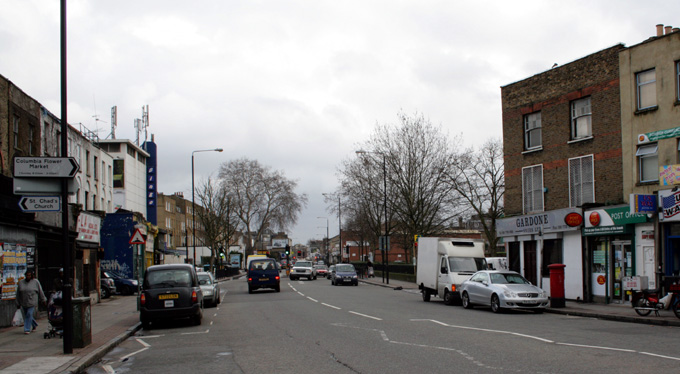|
Kingsland Road
Kingsland Road is the name given to an East London stretch of the A10 road within the London Borough of Hackney in England. The A10 was originally a Roman Road better known as Ermine Street or sometimes the Old North Road. The name ''Kingsland Road'' is used from the junction with Old Street and Hackney Road (the section of the A10 south of this is Shoreditch High Street) north to the junction with Balls Pond Road and Dalston Lane, where it changes its name to Kingsland High Street. Kingsland Road means the road ''to'' Kingsland, an old settlement that has been absorbed by modern Dalston. The quality and variety of architectural styles present along the road has led to the Kingsland Road corridor being designated a conservation area. The Museum of the Home formerly known as Geffrye Museum is located on Kingsland Road. There are both wealthy and parts with almshouses An almshouse (also known as a bede-house, poorhouse, or hospital) is charitable organization, charitab ... [...More Info...] [...Related Items...] OR: [Wikipedia] [Google] [Baidu] |
Kingsland Road Railway Bridge 2
Kingsland may refer to: Places ;Barbados * Kingsland, Barbados (in Christ Church, Barbados Parish) ;Canada * Kingsland, Calgary, Alberta, a neighborhood ;Australia * proposed alternative name for the Northern Territory in 1912 ;New Zealand * Kingsland, New Zealand ** Kingsland railway station, New Zealand ;Wales * Kingsland, Anglesey, Wales ;England * Kingsland, Herefordshire, England * Kingsland, London, England ** Kingsland Basin ** Kingsland Road * Kingsland, Shropshire (Shrewsbury) ** Kingsland Bridge ;United States * Kingsland, Arkansas * Kingsland, Georgia * Kingsland, Indiana * Kingsland, New Jersey * Kingsland Homestead New York City, NY * Kingsland, Texas * Kingsland (Chimney Corner, Virginia), listed on the National Register of Historic Places in Chesterfield County, Virginia People Kingsland is also a British surname. * Ambrose Kingsland (1804–1878), mayor of New York City * Gerald Kingsland (1930–2000), British writer * Paddy Kingsland (1947–present), British co ... [...More Info...] [...Related Items...] OR: [Wikipedia] [Google] [Baidu] |
East London
East London is the part of London, England, east of the ancient City of London and north of the River Thames as it begins to widen. East London developed as London Docklands, London's docklands and the primary industrial centre. The expansion of railways in the 19th century encouraged the eastward expansion of the East End of London and a proliferation of new suburbs. The industrial lands of East London are today an area of regeneration, which are well advanced in places such as Canary Wharf and ongoing elsewhere. History Toponymy The etymology of London is uncertain, but is known to be an ancient name. The concept of East London as a distinct area is a relatively recent innovation. John Strype's map of 1720 describes London as consisting of four parts: The City of London, City and Liberty of Westminster, Westminster, Southwark and That Part Beyond the Tower. From the late 19th century the term East End of London was used to describe areas immediately adjacent to the City in t ... [...More Info...] [...Related Items...] OR: [Wikipedia] [Google] [Baidu] |
A10 Road (England)
The A10 is a major road in England which runs between The City of London and King's Lynn in Norfolk. At its southern terminus, the route meets the A3 directly north of London Bridge, above Monument London Underground station. At its northern end, the A10 meets the A47 and A149 roads south-west of King's Lynn town centre. The route passes through or around primary destinations in Greater London, Hertfordshire, Cambridgeshire and Norfolk, including Dalston, Enfield, Hertford, Cambridge, Ely and Downham Market. The route between Bishopsgate in the City of London and Royston, Hertfordshire, roughly follows the path of Ermine Street, a Roman road. Route City of London At its southern end, the A10 begins at a junction with the A3, on the northern bank of the River Thames. The A3 runs southbound over London Bridge towards Elephant and Castle, before continuing to Clapham, Kingston upon Thames, Guildford and Portsmouth. At the junction the A10 also meets Cannon Street ... [...More Info...] [...Related Items...] OR: [Wikipedia] [Google] [Baidu] |
London Borough Of Hackney
The London Borough of Hackney ( ) is a London boroughs, London borough in Inner London, England. The historical and administrative heart of Hackney is Mare Street, which lies north-east of Charing Cross. The borough is named after Hackney, London, Hackney, its principal district. Southern and eastern parts of the borough are popularly regarded as being part of east London that spans some of the traditional East End of London with the northwest belonging to north London. Its population is estimated to be 281,120. The London Plan issued by the Greater London Authority assigns whole boroughs to List of sub regions used in the London Plan, sub-regions for statutory monitoring, engagement and resource allocation purposes. The most recent (2011) iteration of this plan assigns Hackney to the 'East' sub-region, while the 2008 and 2004 versions assigned the borough to "North" and "East" sub-regions respectively. The modern borough was formed in 1965 by the merger of the Metropolitan Boro ... [...More Info...] [...Related Items...] OR: [Wikipedia] [Google] [Baidu] |
Roman Road
Roman roads ( ; singular: ; meaning "Roman way") were physical infrastructure vital to the maintenance and development of the Roman state, built from about 300 BC through the expansion and consolidation of the Roman Republic and the Roman Empire. They provided efficient means for the overland movement of armies, officials, civilians, inland carriage of official communications, and trade goods. Roman roads were of several kinds, ranging from small local roads to broad, long-distance highways built to connect cities, major towns and military bases. These major roads were often stone-paved and metaled, cambered for drainage, and were flanked by footpaths, bridleways and drainage ditches. They were laid along accurately surveyed courses, and some were cut through hills or conducted over rivers and ravines on bridgework. Sections could be supported over marshy ground on rafted or piled foundations.Corbishley, Mike: "The Roman World", page 50. Warwick Press, 1986. At the peak of ... [...More Info...] [...Related Items...] OR: [Wikipedia] [Google] [Baidu] |
Ermine Street
Ermine Street is a major Roman road in England that ran from London (''Londinium'') to Lincoln ('' Lindum Colonia'') and York ('' Eboracum''). The Old English name was ''Earninga Strǣt'' (1012), named after a tribe called the ''Earningas'', who inhabited a district later known as ''Armingford Hundred'', around Arrington, Cambridgeshire, and Royston, Hertfordshire. "Armingford", and "Arrington" share the same Old English origin. The original Celtic and Roman names for the route remain unknown. It is also known as the Old North Road from London to where it joins the A1 Great North Road near Godmanchester. Course Ermine Street begins at Bishopsgate, where one of the seven gates in the wall surrounding Roman London was located. From here it runs north up Norton Folgate, Shoreditch High Street and Kingsland Road through Stoke Newington (forming Stoke Newington Road and Stoke Newington High Street), Tottenham, Edmonton and eastern Enfield (Ponders End, Enfield Hig ... [...More Info...] [...Related Items...] OR: [Wikipedia] [Google] [Baidu] |
Old North Road
Ermine Street is a major Roman road in England that ran from London (''Londinium'') to Lincoln (''Lindum Colonia'') and York (''Eboracum''). The Old English name was ''Earninga Strǣt'' (1012), named after a tribe called the ''Earningas'', who inhabited a district later known as ''Armingford Hundred'', around Arrington, Cambridgeshire, and Royston, Hertfordshire. "Armingford", and "Arrington" share the same Old English origin. The original Celtic and Roman names for the route remain unknown. It is also known as the Old North Road from London to where it joins the A1 Great North Road near Godmanchester. Course Ermine Street begins at Bishopsgate, where one of the seven gates in the wall surrounding Roman London was located. From here it runs north up Norton Folgate, Shoreditch High Street and Kingsland Road through Stoke Newington (forming Stoke Newington Road and Stoke Newington High Street), Tottenham, Edmonton and eastern Enfield (Ponders End, Enfield Highway, Enfield ... [...More Info...] [...Related Items...] OR: [Wikipedia] [Google] [Baidu] |
Old Street
Old Street is a street in inner north-east Central London, England that runs west to east from Goswell Road in Clerkenwell, in the London Borough of Islington, via St Luke's and Old Street Roundabout, to the crossroads where it meets Shoreditch High Street (south), Kingsland Road (north) and Hackney Road (east) in Shoreditch in the London Borough of Hackney. It has London Underground station Old Street on the Northern line which has other platforms for National Rail's Northern City Line. Its west half is inside London's Congestion Charging Zone. The street's middle (from Old Street Station to Great Eastern Street) follows the zone's eastern boundary, while the street's eastern end falls entirely outside the zone. History Old Street was recorded as ''Ealdestrate'' in about 1200, and ''le Oldestrete'' in 1373. As befits its name there are some suggestions that the road is of ancient origin. It lies on the route of an old Roman or possibly pre-Roman track connecting ... [...More Info...] [...Related Items...] OR: [Wikipedia] [Google] [Baidu] |
Hackney Road
Hackney Road is a London arterial route running from St Leonard's, Shoreditch, Shoreditch Church in London Borough of Hackney to Cambridge Heath in the London Borough of Tower Hamlets. The route runs along the northern edge of Bethnal Green and southern edge of Haggerston. It lies close to the border between the boroughs of London Boroughs of Hackney and Tower Hamlets. In recent years, Hackney Road has begun to experience the gentrification of nearby Columbia Road market, Columbia Road or Broadway Market, London, Broadway Market. Despite this, a number of derelict buildings still remain, including the empty Children's Hospital. The road also has striptease venues such as ''Browns'' and ''The Olde Axe'' (Clifton 2002), a bingo hall, fast-food outlets and building sites. Hackney City Farm is located at the junction of (intersection with) Goldsmith's Row on the northern (London Borough of Hackney, Hackney) side of the road. Next to the farm is Haggerston Park. In 2008 a 178-room ... [...More Info...] [...Related Items...] OR: [Wikipedia] [Google] [Baidu] |
Shoreditch High Street
Shoreditch High Street is the old main street of Shoreditch, London. It is part of the A10 road and connects Norton Folgate to the south with Kingsland Road to the north. It constitutes a segment of the Roman Ermine Street, which ran directly north from London to Lincoln and York. The parish church of St Leonard's, Shoreditch is situated at the north-east end of the road, at the crossroads where it meets with Hackney Road. In the past, Shoreditch High Street boasted both a prestigious theatre and a music hall, though these are now long gone; no trace survives. The National Standard Theatre at 2/3/4 Shoreditch High Street opened in 1837. By the late 19th century it was one of the largest theatres in London. In 1926, it was converted into a cinema called the New Olympia Picturedrome. The building was demolished in 1940. Sims Reeves, Mrs Marriott and James Robertson Anderson all performed there; the theatre also hosted programmes of classical opera and even Shakespeare, ... [...More Info...] [...Related Items...] OR: [Wikipedia] [Google] [Baidu] |
Kingsland, London
Kingsland was a small road-side settlement centred on Kingsland High Street on the Old North Road (the present A10), around the junction with Dalston Lane. It is no longer discernable as a separate settlement, though the historic street pattern remains. Since the opening of Dalston Junction station in 1865, the area has become known as Dalston, which was originally a separate hamlet further east. Historically part of the county of Middlesex, the area is within the London Borough of Hackney.Cherry and Pevsner (1988) ''London 4: North'': 475 History Origins ''Kingsland'' derives its name from being the hunting grounds of a tudor era, Tudor royal residence at Newington Green – hence ''King's Lands''. At the time, the area was still heavily forested – as part of a forest stretching from Shoreditch to Enfield Chase – and roamed by wild bulls, stags and wild boars. [...More Info...] [...Related Items...] OR: [Wikipedia] [Google] [Baidu] |
Dalston
Dalston () is an area of East London, in the London Borough of Hackney. It is northeast of Charing Cross. Dalston began as a hamlet on either side of Dalston Lane, and as the area urbanised the term also came to apply to surrounding areas including Kingsland and Shacklewell, all three of which being part of the Ancient Parish of Hackney. The area has experienced a high degree of gentrification in recent years, a process accelerated by the East London line extension, now part of London Overground, and the reopening of Dalston Junction railway station, part of London's successful bid to host the 2012 Olympics. Bounds Dalston has never been an administrative unit, and partly for this reason the boundaries are not formally defined. There are generally understood boundaries in the south and west, but less clarity to the north and east. There is an electoral ward of the same name which covers a part of the northwest of Dalston. Dalston's boundaries (taking in Kingsland and ... [...More Info...] [...Related Items...] OR: [Wikipedia] [Google] [Baidu] |






